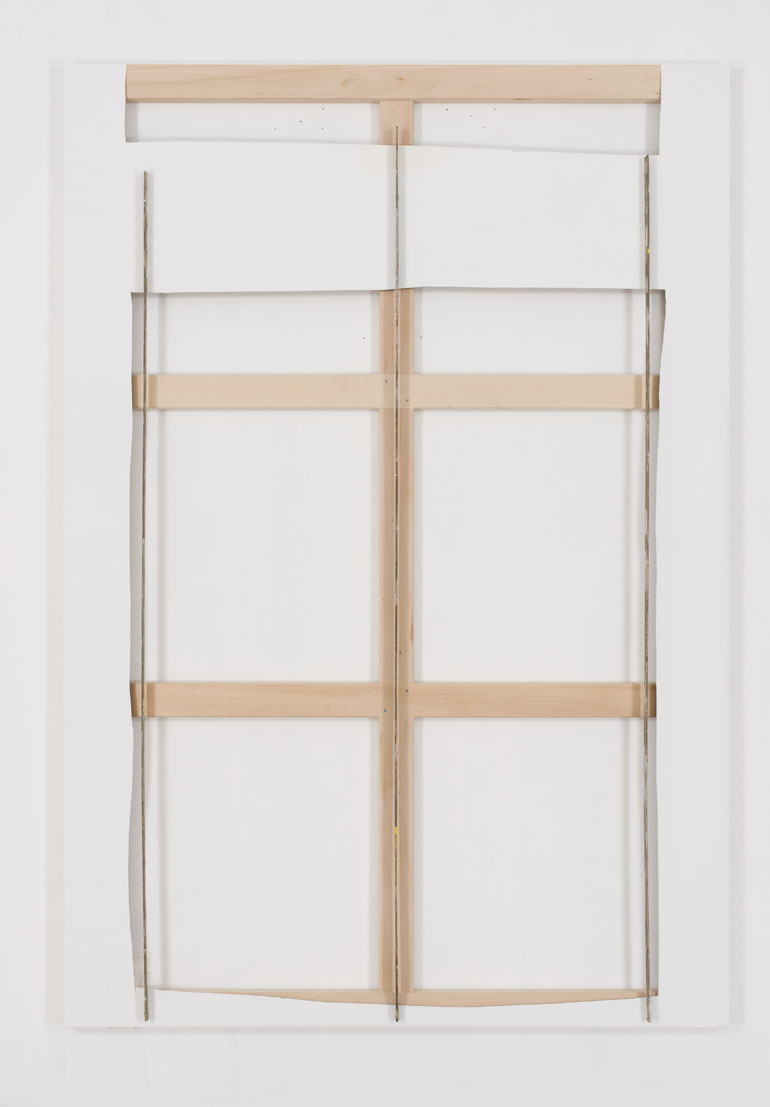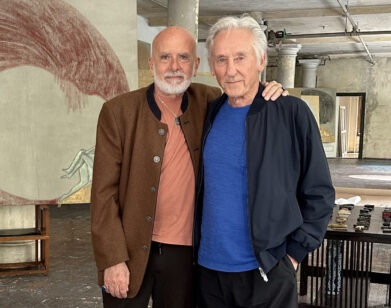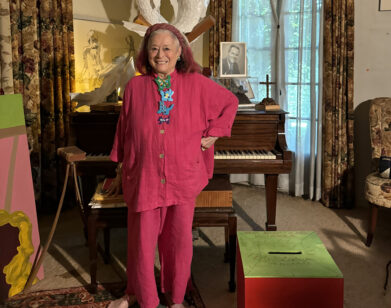Questionnaire: Richard Aldrich is Serious!

Bed; If I Paint Crowned I’ve Had It, Got Me? Both, 2008, courtesy of the artist and Bortolami.
Richard Aldrich’s paintings defy a signature style but share a signature sensibility, a slack virtuosity that belies its interest in communication and self-reference. Aldrich’s paintings, a new series of which opens at Bortolami tonight, can be modest, if not always in size then in casual execution and generous intimate reference. “They’re sincere,” Aldrich says, in a play with the seriousness of his work, “Do these paintings look sincere?”
Alex Gartenfeld: How old are you?
Richard Aldrich: I’m 33.
AG: You’re 150% of me. I was born in 1986.
RA: That’s funny. I remember 1985. I don’t remember exactly what about it, but I remember thinking, “It’s 1985,” and that the year meant something. Also there is 1984, the book. I remember when the Challenger shuttle went up, 1986. A teacher from the local high school was third-runner-up to be the teacher who went up into space. That was the heavy thing: They asked the teacher, knowing that the trip would be a disaster, would he still have wanted to go up in the Challenger. And he said yes.
AG: But this has parallels in your work, in the tension between abstraction and more personal connections.
RA: This show is intimate, and very directly personal. The show I just did in London (at Corvi-Mora) was a lot more abstract. The objects had their own lives and histories. It was a lot more about the how these other things interact with each other and what structures inform the context of that interaction.
AG: But you often use text, as both part of the paintings and as press materials. Surely this provides some sort of context, even when it’s part of the show.
RA: Well, for the Corvi-Mora show, I had tried to write a press release. I wrote a paragraph and it didn’t really go anywhere. I wrote it again and it didn’t work that time either. But I looked at these two paragraphs later and they were more or less the same thing, failed attempts at articulating this idea, but in that they were translations of each other, or two translations or perspectives of the same idea. Together they created a whole new text with a different intent and focus from the original. The exhibition almost became more about that, with the “show” serving as subject matter.
AG: So what about this show is more personal?
RA: With these recent paintings, for a lot of them the impetus comes more directly from myself. And even the installation has ended up being like some psychological schematic: One painting is across from another, one at this angle to that. One has a figure and a mirror in it so it’s looking through a wall, but also behind it.
AG: There’s the one that you’ve cut, “If I Paint Crowned I’ve Had It, Got Me” which appears like a window.
RA: That painting I titled after this quote of Cezanne from Merleau-Ponty’s “Cezanne’s Doubt”: [pulls up article on computer and reads] “The painter who conceptualizes and seeks the expression first misses the mystery- renewed every time we look at someone-of a person’s appearing in nature … ‘All through my youth,’ said Cezanne, ‘I wanted to paint that, that tablecloth of fresh-fallen snow… Now I know that one must only want to paint rose, “symmetrically, the place settings” and “blond rolls.” If I paint “crowned’ I’ve had it, got me?”‘” It’s a stance on the way that an artist should work, and go about observing and interacting with the world.
I started this painting for which I had one idea, but, again, it wasn’t going anywhere. So I cut what I didn’t like, which ended up being everything. And I liked it! I cut everything out and what was left was this nice shape. There were strips of wood on the ground-I had painted them the week before with no real purpose in mind, they were just like these sculptural brushstrokes-and placing them on the painting, they complemented this new cut-out composition nicely. Sometimes ideas work and sometimes they don’t, but often some sort of metamorphosis is necessary. Sometimes this is visible, and other times, not.
AG: Is this a line you feel like you’re permanently towing, between a casual handling and sometimes very few marks, and expressing yourself?
RA: I really like this poem that Eve Hesse wrote about Sol Lewitt’s work. It’s about her seeing emotion and feeling in his artwork, and calling him out on his reputed coldness and the whole minimalist anti-Expressionism. It is just about perspectives and again, the idea of allowing things to exist in different ways in a kind of fluid continuum. or that what is important is that things can and do exist in different places, and this doesn’t detract from either.
AG: How does this play out in a painting like “Bed,” which ostensibly uses domestic space at his subject, but which is so casually composed of roughly cut fabric?
RA: For “Bed” I made this curtain where I’d gotten this fabric but it wasn’t the right size so I had to put these two pieces together. But I only had chopsticks to do it with. I used the curtain for a week and it didn’t really work. So I took it to a studio. In my studio there always things lying around, I make a bunch of stuff and maybe it gets used and maybe it doesn’t. Often times with the collage-type paintings I lay the canvas on the ground, and just lay things on it. So I put the curtain on it, and I liked how it suddenly became a bed. The window became a bed. And maybe they are windows, beds.
Bortolami is located at 510 W. 25th St., New York. The opening is from 6–8 PM.






